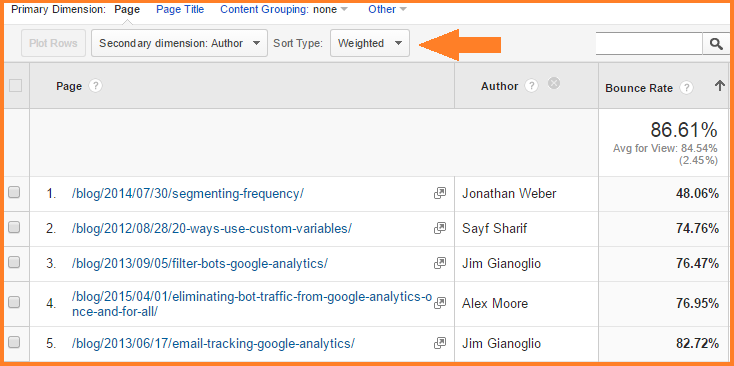The Value of 'Secondary Dimensions' in Google Analytics: Thorough Analysis
The Value of 'Secondary Dimensions' in Google Analytics: Thorough Analysis
Blog Article
Decoding the Significance of Additional Measurement in Google Analytics: All About Its Value and Influence
In the realm of electronic analytics, the usage of secondary measurements within Google Analytics offers as a pivotal tool for critical deeper layers of information understandings. The relevance of secondary dimensions lies in their capability to provide a nuanced view of user behavior and communication with a web site or platform.
Comprehending Second Measurements in Google Analytics
The understanding of secondary measurements in Google Analytics is essential for gaining deeper understandings into customer actions and website performance. While main measurements offer fundamental data points such as website traffic sources and page views, secondary measurements enable a more nuanced evaluation by giving additional context to these key metrics. By integrating additional dimensions, individuals can sector and filter their information to reveal patterns and fads that may not be promptly apparent.

Unveiling the Advantages of Secondary Dimensions
Building upon the fundamental understanding of secondary measurements in Google Analytics, exploring the benefits they offer reveals vital understandings for boosting data evaluation and decision-making. By integrating additional measurements, customers can dive much deeper into their data, acquiring a more extensive sight of individual habits, content performance, and various other essential metrics.
Additionally, secondary measurements supply context to main information, offering extra layers of information that can aid in understanding customer communications and choices. This boosted understanding can assist critical decision-making, bring about even more targeted marketing projects, website optimizations, and total improved efficiency. In essence, secondary measurements act as a powerful tool for unlocking deeper understandings and making best use of the energy of Google Analytics for services and internet site owners.
Leveraging Secondary Measurements for Boosted Insights
By harnessing the power of additional measurements in Google Analytics, businesses can discover much deeper understandings that drive educated critical and decision-making optimization initiatives. Leveraging second measurements allows services to dive past surface-level data and obtain a much more comprehensive understanding of customer actions, audience demographics, website traffic sources, and web site efficiency. By incorporating primary dimensions like web traffic sources with second dimensions such as geographic area or gadget category, services can recognize which regions or devices are driving the most valuable web traffic to their web site.
Moreover, secondary measurements allow businesses to segment and evaluate data better, assisting them recognize trends, patterns, and possibilities that may have or else gone undetected. By making use of additional measurements, organizations can tailor their advertising methods, material, and user experience to much better fulfill the needs and preferences of their target audience. Fundamentally, leveraging second measurements in Google Analytics encourages services to make data-driven decisions that lead to improved performance, boosted ROI, and lasting development.

Impact of Secondary Dimensions on Data Evaluation
Enhancing data evaluation with the utilization of secondary dimensions in Google Analytics offers organizations with a much deeper understanding of their on the internet efficiency metrics. By including second measurements, such as click site time of day, geographic area, or device classification, services can discover useful understandings that might have been neglected with primary measurements alone. This enhanced level of granularity allows for more accurate division of information, enabling organizations to identify patterns, fads, and relationships that can drive strategic decision-making.

Taking Full Advantage Of Prospective: Secondary Capacities Techniques
One key approach is to integrate additional dimensions with primary measurements to gain a thorough view of individual interactions. Coupling the key dimension of 'source/medium' with additional measurements like 'touchdown web page' or 'device classification' can reveal which channels are driving website traffic to certain web pages or exactly how individual behavior differs throughout gadgets.
Additionally, using second dimensions to sector information based upon user demographics, actions, or technology can help organizations customize their advertising and marketing initiatives to specific target market sectors. This targeted method can bring about boosted conversion prices, boosted individual experiences, and ultimately, raised ROI. By optimizing the capacity of additional measurements in Google Analytics, businesses can make educated decisions, optimize their on the internet presence, and drive sustainable development.
Conclusion
In conclusion, additional measurements in Google Analytics play a critical function in giving much deeper insights and boosting information evaluation. Integrating second dimensions into data evaluation methods can lead to more informed decision-making and enhanced general efficiency.
While key dimensions supply fundamental data points such as web traffic sources and web page sights, secondary measurements enable for a more nuanced analysis by providing additional context to these main metrics. By integrating key measurements like traffic sources with additional dimensions such as geographical location or tool classification, companies can recognize which areas or tools are driving the most useful website traffic to their internet site.
By integrating second dimensions, such as time of day, geographic location, or device category, services can reveal useful understandings that might have been forgotten with main dimensions alone. One key technique is to combine additional dimensions with primary measurements to obtain a detailed view of customer communications. Coupling the main wikipedia reference measurement of 'source/medium' with secondary dimensions like 'touchdown page' or 'gadget group' can expose which channels are driving traffic to details web pages or exactly how user behavior varies across devices.
Report this page